
Table of Contents for Journal of Cuneiform Studies 72 (2020)
You can receive JCS (and other ASOR publications) through an ASOR Membership. Please e-mail the Membership office if you have any questions.
Pp. 3–21: “Der Beruf su-si-(ig) im 3. Jahrtausend,” by M. Such-Gutiérrez
The Sumerian professional designation su-si-(ig) has been usually translated 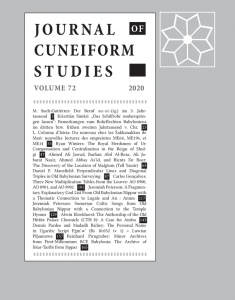
ASOR Members with online access: navigate to the token link email sent to you before attempting to read this article. Once you have activated your member token, click here to access the above article on The University of Chicago Press Journals’ website.
Pp. 23–33: “„Das Schilfrohr umherspringen lassen”: Bemerkungen zum Rohrflechten Babyloniens im dritten bzw. frühen zweiten Jahrtausend v. Chr.,” by Krisztián Simkó
In spite of extensive research conducted in the field, there are some areas of Babylonian reed industries that have eluded understanding since the first comprehensive overview was published on this topic in 1989. The aim of this communication is to provide some insights into one such area, the preparation of pliable reed strands. On the basis of partly overlooked philological evidence, it will be argued that phrases like gi gu4- ud, na4 ad-KID, and na4ša-ga-ra relate, one way or another, to this procedure.
ASOR Members with online access: navigate to the token link email sent to you before attempting to read this article. Once you have activated your member token, click here to access the above article on The University of Chicago Press Journals’ website.
Pp. 35–46: “Du nouveau chez les Šakkanakkus de Mari: nouvelles lectures des empreintes ME64, ME196, et ME14,” by L. Colonna d’Istria
Cylinder seal impressions rank highly among the 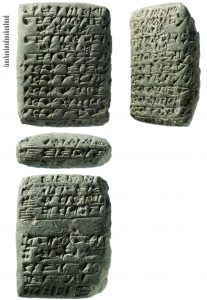
ASOR Members with online access: navigate to the token link email sent to you before attempting to read this article. Once you have activated your member token, click here to access the above article on The University of Chicago Press Journals’ website.
Pp. 47-64: “The Royal Herdsmen of Ur: Compensation and Centralization in the Reign of Shulgi,” by Ryan Winters
Centralization functioned on multiple complementary levels during the Ur III period. On the one hand, the royal government controlled vast herds of livestock, which it distributed for tending to herdsmen located in various provinces throughout the entire empire. On the other, it exercised direct control over land located in these provinces, which it then used to compensate royal workers in charge of tending these animals. This article studies the evidence for the royal herdsmen, their organization and activities, and their compensation through royal grants of real estate.
ASOR Members with online access: navigate to the token link email sent to you before attempting to read this article. Once you have activated your member token, click here to access the above article on The University of Chicago Press Journals’ website.
Pp. 65-86: “The Discovery of the Location of Malgium (Tell Yassir),” by Ahmed Ali Jawad, Barhan Abd Al-Reza, Ali Jabarat Nasir, Ahmed Abbas As’id, and Rients de Boer
This article establishes that the ancient city of Malgium is located at modern Tell Yassir.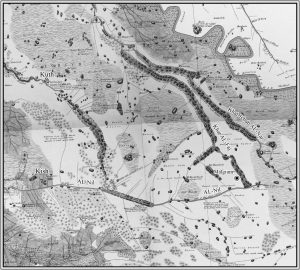
ASOR Members with online access: navigate to the token link email sent to you before attempting to read this article. Once you have activated your member token, click here to access the above article on The University of Chicago Press Journals’ website.
Pp. 87-99: “Perpendicular Lines and Diagonal Triples in Old Babylonian Surveying,” by Daniel F. Mansfield
The tablet Si. 427 demonstrates that diagonal triples, or Pythagorean triples as they are now known,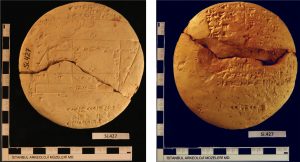
ASOR Members with online access: navigate to the token link email sent to you before attempting to read this article. Once you have activated your member token, click here to access the above article on The University of Chicago Press Journals’ website.
Pp. 101-116: “Three New Multiplication Tables From the Louvre: AO 8900, AO 8901, AND AO 8902,” by Carlos Gonçalves
AO 8900, AO 8901, and AO 8902 are three hitherto unpublished Old Babylonian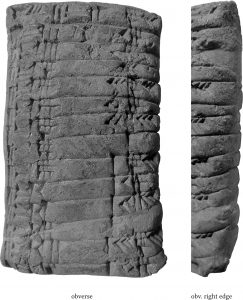
ASOR Members with online access: navigate to the token link email sent to you before attempting to read this article. Once you have activated your member token, click here to access the above article on The University of Chicago Press Journals’ website.
Pp. 117-128: “A Fragmentary Explanatory God List from Old Babylonian Nippur with a Thematic Connection to Lugale and An : Anum: A Glimpse into the Origins of Mesopotamian Hermeneutical Tradition,” by Jeremiah Peterson
This article provides an edition of the previously unpublished Old Babylonian tablet fragment that may be part of an explanatory god list. With all due caution, it is possible to suggest that it provides a rare example of a god list with extended commentary from the Old Babylonian period with each preserved entry seemingly eliciting an explanation. The format is unique in that it occurs as running text without columned entry or any other topical demarcation, arranged according to divine name and its respective explanation or equivalent. Likewise, although the fragmentary state of this piece rules out any definitive interpretation, it is possible that it may refer to certain lines in the Ninurta poem Lugale.
ASOR Members with online access: navigate to the token link email sent to you before attempting to read this article. Once you have activated your member token, click here to access the above article on The University of Chicago Press Journals’ website.
Pp. 129-142: “Sumerian Cultic Songs from Old Babylonian Nippur with a Connection to the Temple Hymns,” by Jeremiah Peterson
Several fragmentary Sumerian cultic songs from Old Babylonian Nippur, including one that seems to be for Ninurta (“Ninurta H”), contain enumerations of major cultic centers in southern Mesopotamia that are unmistakably reminiscent of the Sumerian Temple Hymns, as well as two hymns to King Shulgi. The following communication considers the potential parameters of intertexuality that may be involved with these texts. Such proximity to the corpus of cultic songs qualifies the Sitz im Leben of the Temple Hymns at Old Babylonian Nippur.
ASOR Members with online access: navigate to the token link email sent to you before attempting to read this article. Once you have activated your member token, click here to access the above article on The University of Chicago Press Journals’ website.
Pp. 143-155: “The Authorship of the Old Hittite Palace Chronicle (CTH 8): A Case for Anitta,” by Alwin Kloekhorst
It is generally thought that the Old Hittite Palace Chronicle was composed by Muršili I (reigned ca. 1620–1590 BCE) and that the anecdotes featuring in this composition thus took place during the reign of his predecessor Ḫattušili I (ca. 1650–1620 BCE). Recently, Forlanini proposed that the text’s author was not Muršili I but rather Ḫattušili I, who tells about the times of his predecessor Labarna I (ca. 1680(?)–1650 BCE). In the present article it will be argued that both views are difficult to maintain. Instead, six arguments will be presented that rather indicate that the Palace Chronicle may have been authored by Anitta, king of Nēša (reigned ca. 1740–1725 BCE), and that the composition recounts the reign of Anitta’s father Pitḫāna, with some anecdotes even dating back to the times before Pitḫāna’s conquest of the city of Nēša, i.e. before 1750 BCE.
ASOR Members with online access: navigate to the token link email sent to you before attempting to read this article. Once you have activated your member token, click here to access the above article on The University of Chicago Press Journals’ website.
Pp. 157-163: “The Personal Name in Ugaritic Script pǵm˹w˺ (RS 10.052 iv 1) = Luwian piḫamuwa,” by Dennis Pardee and Madadh Richey
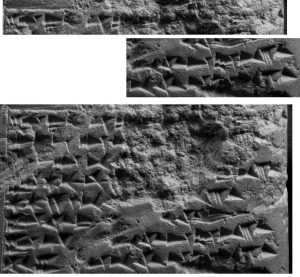
ASOR Members with online access: navigate to the token link email sent to you before attempting to read this article. Once you have activated your member token, click here to access the above article on The University of Chicago Press Journals’ website.
Pp. 165–198: “Minor Archives from First-Millennium Bce Babylonia: The Archive of Iššar-Tarībi from Sippar,” by Reinhard Pirngruber
The present contribution provides full editions of all texts belonging to the archive of the Sipparean businessman Iššar-tarībi, who was active during the last years of the Neo-Babylonian kingdom and the early years of Achaemenid rule, as well as a brief discussion of its central features. It is part of a larger collaborative effort to make available the so-called “satellite archives” of the Ṣāḫiṭ-ginê A archive and related and unrelated smaller archives from Sippar. The results will be published in forthcoming volumes of this journal; archives in preparation include those of Adad-šamê, Mušēzib, Rēˀi-sisê, and Ša-nāšišu A (Y. Levavi), Balīhu, Aqūba, and Šamaš-iddin/Rēmūt (J. Hackl), as well as Šangû-Šamaš and Šangû-Ištar-Bābili (M. Gross). A companion volume containing copies of all tablets published in this series as well as a comprehensive prosopography is in preparation for the JCS Supplemental Series.
ASOR Members with online access: navigate to the token link email sent to you before attempting to read this article. Once you have activated your member token, click here to access the above article on The University of Chicago Press Journals’ website.
ASOR Members with online access: navigate to the token link email sent to you before attempting to read this issue. Once you have activated your member token, click here to access the the entire issue, including book reviews, on The University of Chicago Press Journals’ website.